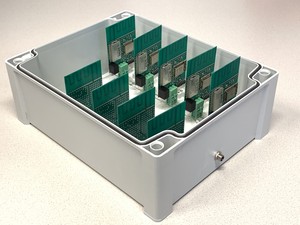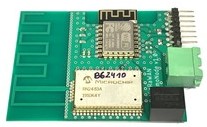While the developing of simple LoRa-systems is rather easy, the use of LoRaWAN-systems is more demanding. While the design of a LoRaWAN-node can be tested with commercial networks or LoRaWAN networks which offer free access (e.g. The Things Network), the insight is rather limited. It is strongly recommended to use an open source LoRaWAN network implementation (e.g. ChirpStack) with Linux based gateways. For the latter, ready made images for a Raspberry Pi 3 are available which support different hardware (even low cost one). Using an implementation like ChirpStack gives full insight into the LoRaWAN communication, including network layer packets like JoinRequests/Accepts, ADR (Adaptive Data Rate) changes, frequency list transmissions and much more. All packets can be easily logged as they are accessible via MQTT in a JSON-format.
Anyhow, testing multiple nodes can be a challenging task, especially if LoRaWAN Class-C operation and/or broadcasts are used. For testing such systems, it is recommended to use universal nodes whose functionality is defined by a program/script running on a PC rather than in an embedded firmware to allow easier debugging. Simple evaluation boards (for example, RN2483 PICtail Board) with USB-connections can be bought for this purpose. Unfortunately, this runs the designer in two common problems: a) the development boards are all co-located with the development PC which results in almost the same radio channel for each node and limited ways to test ADR and power levelling. b) Having nodes placed too close to a LoRaWAN gateway potentially results in overdriving the receiver – Depending on the hardware this might result in packets being detect simultaneoulsy at different frequencies or packets being lost.
Hence, the team of InterOP realized a simple development hardware which connects via WiFi to an RN2483 LoRaWAN transceiver. This allows to distribute the nodes across a wider are than possible with USB-cables.
Pictures of the demo/development node: (left) several nodes stacked inside an enclosure, (right) single node


